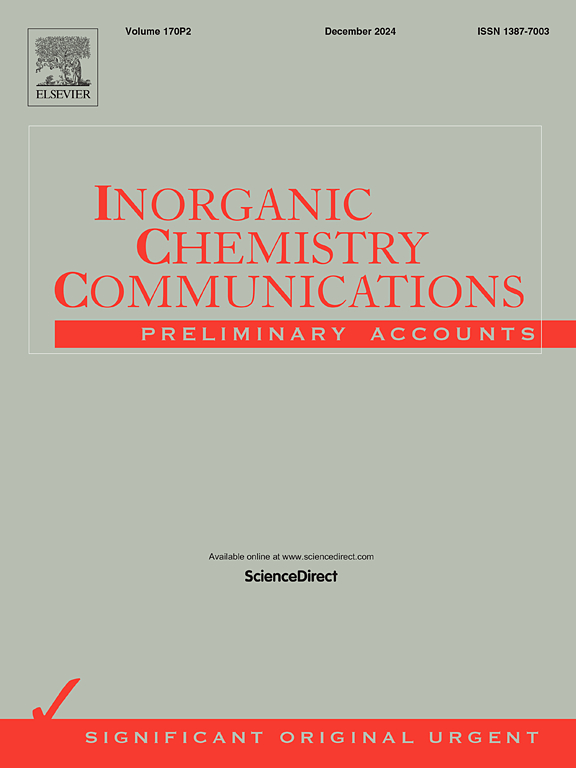TiO2 quantum dots nanocoated soybean protein knitted fabric produced by layer-by-layer nanoarchitectonics for wastewater application potential
IF 4.4
3区 化学
Q1 CHEMISTRY, INORGANIC & NUCLEAR
引用次数: 0
Abstract
This study the layer-by-layer self-assembly (lbl) technique was used for nanocoating of titanium dioxide quantum dots (TiO2QDs) on the soybean protein knitted (SPK) fabric. Chitosan was employed as cation agent for the electrostatic assembly. The synthesized TiO2QDs powder and TiO2QDs nanocoated SPK fabrics were evaluated by means of the characterization of their morphological, chemical, optical, and photocatalytic properties. XRD and HRTEM images showed that sol–gel synthesis provided TiO2QDs with anatase phase and mean particle size of 6 nm. As well as the XPS and FESEM spectra confirmed the TiO2QDs nanocoating on SPK fabric surface, which allowed the evaluation of its photocatalytic properties. The SPK fabric was nanocoated with TiO2QDs after 20 lbl cycles obtained the best result, degrading 99 % of Rhodamine B (RhB) dye in 120 min under UV irradiation. Simultaneously, 88.26 % of TOC removal efficiency also achieved in 120 suggestion that the mineralization was superior, as HPLC results corroborate. Besides the degradation efficiency, the potential of reusability of functionalize fabrics was suggested showing high photocatalytic activity even after six cycles of reuse.

纳米结构制备的TiO2量子点纳米包覆大豆蛋白针织物在废水处理中的应用潜力
本研究采用逐层自组装(lbl)技术在大豆蛋白针织物上制备二氧化钛量子点(TiO2QDs)纳米涂层。采用壳聚糖作为阳离子剂进行静电组装。通过形貌、化学性能、光学性能和光催化性能等方面的表征,对合成的TiO2QDs粉末和TiO2QDs纳米涂层SPK织物进行了评价。XRD和HRTEM图像显示,溶胶-凝胶合成得到的tio2量子点为锐钛矿相,平均粒径为6 nm。同时,通过XPS和FESEM谱分析证实了tio2纳米涂层在SPK织物表面的存在,从而对其光催化性能进行了评价。对SPK织物进行纳米TiO2QDs包覆,经过20 lbl循环,在紫外照射下,120 min内可降解99%的罗丹明B (RhB)染料,达到最佳效果。同时,高效液相色谱(HPLC)结果也证实了120层TOC去除率达88.26%,表明矿化效果较好。除降解效率外,功能化织物在重复使用6次后仍具有较高的光催化活性。
本文章由计算机程序翻译,如有差异,请以英文原文为准。
求助全文
约1分钟内获得全文
求助全文
来源期刊

Inorganic Chemistry Communications
化学-无机化学与核化学
CiteScore
5.50
自引率
7.90%
发文量
1013
审稿时长
53 days
期刊介绍:
Launched in January 1998, Inorganic Chemistry Communications is an international journal dedicated to the rapid publication of short communications in the major areas of inorganic, organometallic and supramolecular chemistry. Topics include synthetic and reaction chemistry, kinetics and mechanisms of reactions, bioinorganic chemistry, photochemistry and the use of metal and organometallic compounds in stoichiometric and catalytic synthesis or organic compounds.
 求助内容:
求助内容: 应助结果提醒方式:
应助结果提醒方式:


